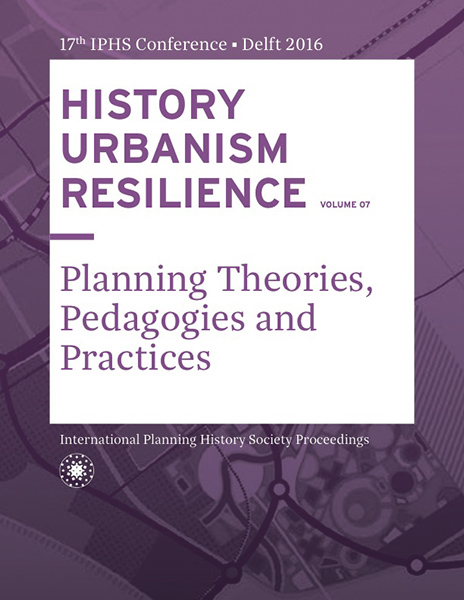Centring space: the possibility of planning in urban community (shequ) construction in Shanghai
DOI:
https://doi.org/10.7480/iphs.2016.7.1343Abstract
“10 golden bars! My grandparents bought this house in 1931 with 10 golden bars” – so claimed a Chinese family living in a historic lilong house for three generations, which now awaits relocation (informant in Duolun community SH-YG-4 2012).
China’s post-economic reform industrialization, mass-migration and accelerated urbanisation has had an impact on cities that is unprecedented in scale and in speed. Either expressed by expansion patterns of industrial-driven peripheries, planned new towns or high-densification of city centres, urbanisation is defined by a profound transformation of urban space and prior socio-spatial orders (Ma and Wu 2005). Largely impacted is the basic socio-spatial unit of the city - the urban community (xiaoqu or shequ) - often destroyed and relocated, and which have been the homes of people, reference points and traditionally the organisers of social relations in China (Fei 1992, 1947). Communities are centred spaces - as centring is the making of space into a place (Feuchtwang 2004), which are being decontextualized from its previous socio-spatial structures by urbanisation processes: i.e. decentred (Morais 2014). Hence a growing concern with social stability and justice (Ma 2007) has set the 12th Five-year Plan to put social management (shehui guanli) and community construction (shequ) at the centre of the government’s tasks (Pieke 2012; Xu 2008; Read 2009; Liu 2006; Yan and Gao 2005; Bray 2005). China aims to build a new society, based on the neighbourhood unit, that can be more autonomous, responsible, and essentially more stable: “residents’ structure is becoming more complex, and controlling is getting difficult” (Juweihui SH-LX-JW 2012). In a context where both society and space are on the move - how can planning assist centring space thus creating communities?
This paper will show evidence - through a qualitative study that explored in-depth one community case in the historic centre of Shanghai - on the role of planning in community construction. It is based on the completed EU-FP7 URBACHINA research project at LSE that looked at sustainable urbanisation in China, which revealed that community construction is defined by a complex relation between planning, governance and the civil society (Morais 2014). It argues for the importance of socio-spatial permanence, which requires the action of planning coordinated with community managers that is presently fragmented and lacking both diagnosis and communication. Duolun Rd in Hongkou district (the densest in Shanghai) is the home of a long-established community further defined by three sub-communities (i.e. Duolun, Yong’an and Liulin xiaoqus), with similar social contexts but very different spatial patterns and Juweihui administrations (i.e. residents’ committees). It dates from the early 1900s and is located within the Shanyinlu Historic and Cultural Conservation Area, Sichuanbeilu Jiedao (sub-district). Planned for redevelopment in 1998 (only partially completed), Duolun now suffers from severe spatial decay, overcrowdedness and the uncertainty of relocation to peripheral Shanghai.
Methods combine spatial analysis by mapping the transformation of the community in the history of planning and urbanisation in Shanghai (metropolitan vs. district level), and an ethnographic approach (on-site observations, semi-structured interviews of 40 residents, planners and plan-makers).

